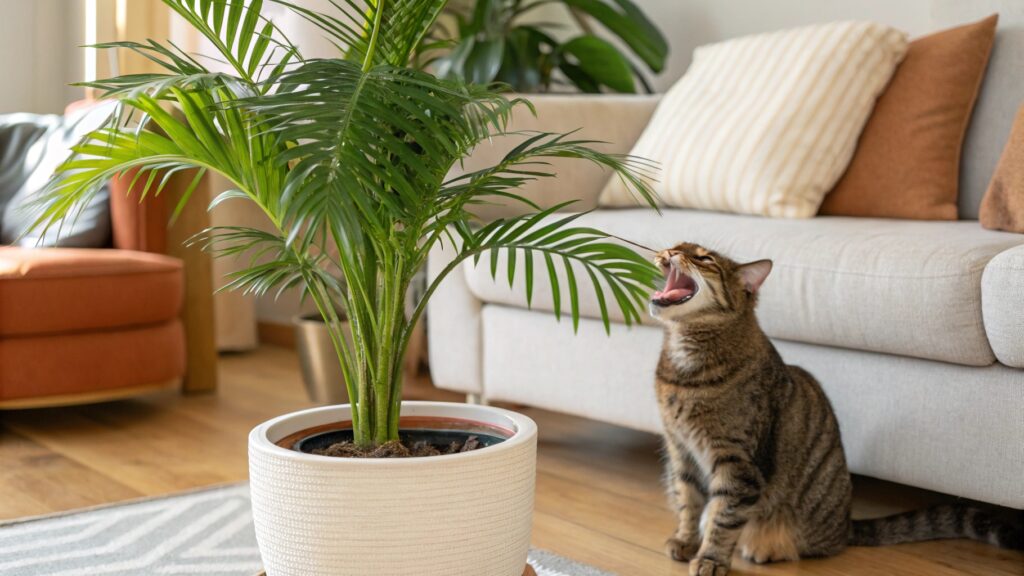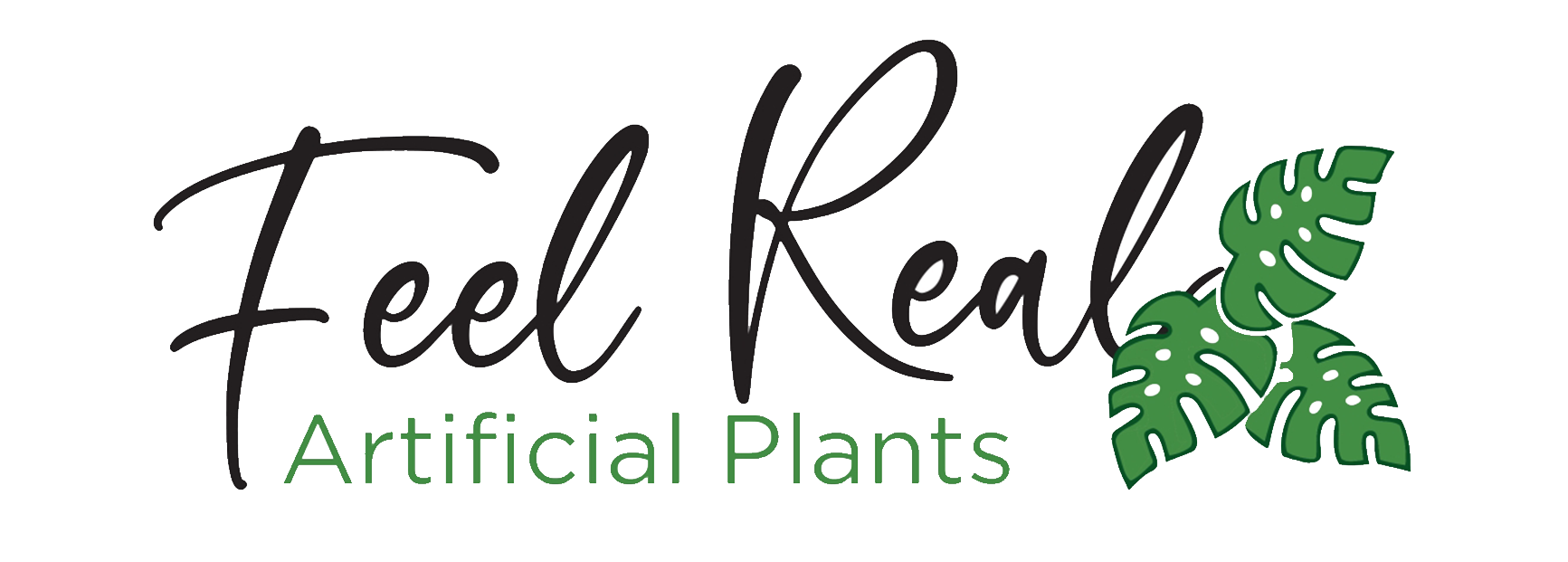Palm trees and palm-like plants are easy to care for and pleasing to the eye. People choose them for indoor and outdoor decoration. However, when you have cats, it’s essential to make sure that the palm trees in your home aren’t dangerous to your feline companions. Though most palm trees safe to cat, some can be toxic and even life-threatening to cats. If you do not know how to identify the toxic palm-like plants, and what to do if your cat ingests them, do not worry, we will talk about them in this article. Additionally, we’ll discuss a safe alternative for pet-friendly homes.
– Are Palm Leaves Dangerous to Cats?
For many common types of palm trees, the leaves themselves are not toxic to cats. Common varieties like the Areca Palm, Kentia Palm and Majesty Palm are generally considered safe. However, not all palms are harmless for cats. Some palm-like plants, such as the Sago Palm, are very much the villains in our cat toxicity scale tale. They are highly toxic and can cause severe health issues if ingested by cats. It’s crucial to identify the specific type of palm plant in your home and understand its potential risks.

– Toxic Palm-Like Plants to Avoid
The Sago Palm (Cycas revoluta) is extremely poisonous to cats and must be kept out of your home and yard. Despite its name and appearance, it is not a palm tree. It’s a cycad, a family of ancient plants that contain a powerful toxin called cycasin. Every single part of the Sago Palm is a threat—from its leaves to its roots. The seeds (or “nuts”) are the most concentrated and deadly part.
Dracaena plants are hardy and easy to care for. They can subsist in different light levels and help to keep your air clean. However, they have a chemical compound in their leaves called saponin, a chemical compound that can cause various symptoms if ingested.
These are two most common types of the toxic palm-like plants that are sold as houseplants or garden plants. It’s best to avoid keeping these plants in your home. If you must, keep them out of reach or in a separate room that your cat can’t access.
– What Happens if a Cat Eats Palm Leaves?
Most leaves of palm trees are safe for cats and don’t offer any nutritional benefits to cats, but some are extremely toxic. Do cats eat palm tree leaves? Yes. And in most cases, cats’ owners don’t realize their cats ate the toxic plants until they see symptoms. These symptoms signs of poisoning can be seen in as little as 15 minutes after consumption but may not appear for several hours. So, pay attention to the following symptoms if a cat chews on or eats part of a palm plant, especially a toxic variety.
Sago palm poisoning symptoms include vomiting, drooling, diarrhea, lack of appetite, and potential liver or central nervous system damage within 2-3 days. Without immediate veterinary care, death may occur within 2-3 days. If your pet ingests sago palm, rush them to a vet for decontamination and treatment.

What to Do if Your Cat Ingests Palm Leaves:
Seek treatment right away if you suspect that your cat may have eaten toxic palm fronds.
- Contact a veterinarian: Call your vet or an emergency animal poison hotline right away.
- Provide Information: Bring a sample or photo of the plant to help identify the species and determine the appropriate treatment.
- Monitor Symptoms: Keep a close eye on your cat’s behavior and report any changes to the vet.
– Artificial Palm Trees: A Safe Alternative
As responsible pet owners, it’s necessary to create a safe and stimulating environment for our feline friends. A surprising way that can contribute positively to a cat-friendly home is the introduction of fake palm plants. Unlike some realistic plants that contain harmful substances, the artificial palm plants or the potted faux palm trees are made from pet-safe materials and non-toxic to cats.
1. Non-toxic materials
Artificial plants are made from a combination of materials such as silk, plastic, and polyester. These materials do not present a significant health risk, even if pets or children ingest small amounts accidentally.
2. No risk of poisoning
Some realistic palm plants can be toxic to cats. Some of their varieties can cause mild digestive issues or leading to serious health issues. Fake plants, on the other hand, eliminate this worry completely by creating a safe environment. In this way, your cat can freely roam without the risk of ingesting harmful substances.
3. Elimination of soil-related problems
Cats like digging and playing in soil. Messy floors and potential health concerns can be led by this behavior, especially if the plants are toxic. Fake plants eliminate the need for soil, prevent a source of mess and minimize the risk of allergic reactions in sensitive cats.

Conclusion
Though many palm plants are safe for cats, it’s important to be aware of those toxic plants like the Sago Palm and Dracaena. If your cat ingests palm fronds, especially from a toxic plant, seek veterinary care immediately. If you do not want to worry a lot, consider artificial palm trees, which offer the same visual appeal without the risks. By choosing pet-safe options, you can create a beautiful and safe environment for both your home and your pet friend.
FAQs:
1. Are all artificial plants safe for cats?
While fake plants and trees aren’t toxic, you should choose high-quality artificial plants made from durable, non-toxic materials. Poorly made ones could have small parts that break off and become a choking hazard.
2. How do I clean artificial plants safely in a home with pets?
Cleaning is simple and pet-safe. For regular dust, you can use a microfiber cloth or a feather duster. For a deeper clean, you can wipe the leaves with a cloth dampened with a mild soap and water solution, then wipe again with a clean, damp cloth to remove any soap residue. Avoid harsh chemical cleaners, as your pets could come into contact with them.


